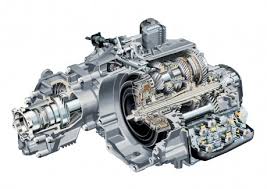Mobile:+86-311-808-126-83
Email:info@ydcastings.com
metal casting products
The Art and Science of Metal Casting Products
Metal casting is a timeless manufacturing process that transforms molten metal into intricate shapes by pouring it into molds. This age-old technique is foundational to various industries, including automotive, aerospace, construction, and art, producing components ranging from engine blocks to decorative sculptures. As technology advances, the metal casting industry evolves, incorporating modern engineering principles to enhance precision, efficiency, and sustainability.
Understanding Metal Casting
At its core, metal casting involves several key steps pattern making, mold creation, melting, pouring, solidification, and finishing. The process begins with making a pattern, usually from wood, metal, or plastic. This pattern serves as a replica of the final product. The next step is creating the mold, which can be either permanent or temporary, depending on the production requirements.
After preparing the mold, metal is heated to a molten state, typically using electric arc furnaces or induction furnaces, ensuring it reaches the appropriate temperature for pouring. Once the metal is molten, it is carefully poured into the mold cavity, where it cools and solidifies into the desired shape. The final steps involve removing the casting from the mold, cleaning it, and finishing it to meet the required specifications.
Types of Metal Casting
There are several methods of metal casting, each with unique characteristics and applications
1. Sand Casting This is the most widely used method, suitable for producing both small and large parts. Sand is mixed with a binder to create a mold, which is reusable. It's particularly favored for its low cost and versatility.
2. Die Casting In die casting, molten metal is injected into a steel mold under high pressure. This process is ideal for high-volume production and is commonly used for manufacturing small, precise parts in automotive and consumer products.
3. Investment Casting Also known as lost-wax casting, this method uses a wax pattern that is coated with a ceramic material. Once the ceramic hardens, the wax is melted away, leaving a cavity for pouring the metal. Investment casting is favored for its ability to produce complex shapes with excellent surface finishes.
4. Continuous Casting This method involves pouring molten metal into a continuous mold, allowing it to solidify and be cut into desired lengths. Continuous casting is commonly used for producing metal rods, bars, and slabs.
5. Centrifugal Casting In this technique, molten metal is poured into a rotating mold, utilizing centrifugal force to ensure uniform thickness and strong castings. It is often used for producing pipe and cylinder components.
metal casting products

Advantages of Metal Casting
Metal casting offers several advantages compared to other manufacturing processes
- Design Flexibility Thesprocess allows for complex shapes and geometries that would be challenging to achieve with machining or other methods.
- Material Efficiency Sand and investment casting can minimize waste material, especially for intricate designs, leading to more sustainable manufacturing practices.
- Cost-effectiveness For large production runs, casting can be more economical due to lower material costs and reduced machining time.
- Wide Range of Materials Metal casting can accommodate various metals, including aluminum, bronze, iron, and steel, enabling manufacturers to select the most suitable material for their products.
Challenges and Innovations
Despite its advantages, metal casting faces several challenges, such as defects like porosity, shrinkage, and dimensional inaccuracies. These issues can impact product performance and reliability. However, advancements in technology, including computer-aided design (CAD), finite element analysis (FEA), and the development of sophisticated casting simulations, are helping manufacturers mitigate these issues and enhance quality control.
Sustainability has also become a critical focus in the metal casting industry. Efforts are underway to recycle scrap metal and reduce energy consumption in the melting process. Furthermore, innovations like 3D printing are starting to be integrated into the pattern-making phase, providing new avenues for design complexity while reducing waste.
Conclusion
In conclusion, metal casting is a vital and dynamic manufacturing process that has stood the test of time. With a rich history and a promising future, the industry continues to adapt to new technologies and sustainability imperatives. As we move forward, the ability to innovate while honoring traditional techniques will undoubtedly shape the next generation of metal casting products, ensuring their relevance in an ever-evolving industrial landscape. Whether in functional components or artistic creations, the impact of metal casting resonates across diverse sectors, bringing imagination to life in metal form.
-
Why Should You Invest in Superior Pump Castings for Your Equipment?NewsJun.09,2025
-
Unlock Performance Potential with Stainless Impellers and Aluminum End CapsNewsJun.09,2025
-
Revolutionize Your Machinery with Superior Cast Iron and Aluminum ComponentsNewsJun.09,2025
-
Revolutionize Fluid Dynamics with Premium Pump ComponentsNewsJun.09,2025
-
Optimizing Industrial Systems with Essential Valve ComponentsNewsJun.09,2025
-
Elevate Grid Efficiency with High-Precision Power CastingsNewsJun.09,2025











